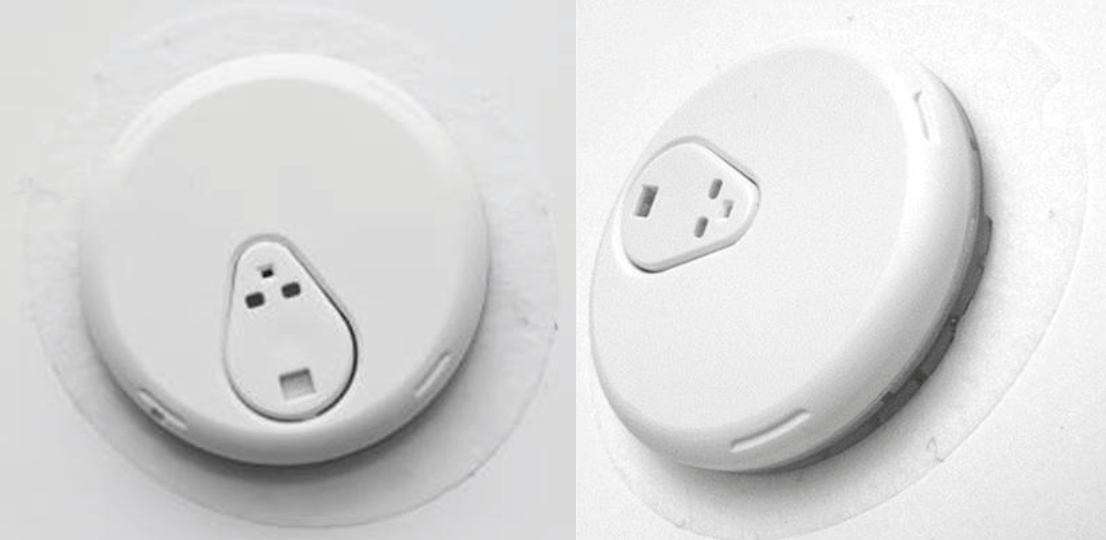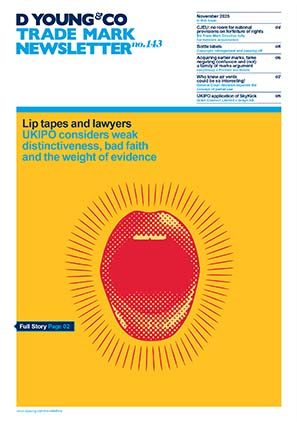3D mark with a technical function? High Court re-enforces difficulties in registration
In this recent High Court case, Mr Justice Smith re-enforced how difficult it can be to acquire and maintain rights in a 3D trade mark, particularly when its shape protects features with a technical function.
Background
The claimant, Abbott Diabetes Care Inc (Abbott), specialises in the development, manufacture and sale of continuous glucose monitoring (CGM) systems.
The three defendants at trial were: Sinocare Inc, Sinocare Meditech Inc and Sannuo Health Management Co Ltd (Sinocare). Sinocare manufactures and sells, inter alia, CGM systems.
In 2022, Abbott registered a 3D trade mark in the UK for the following mark, which comprises the “on-body-unit” (OBU) within which sensor components and transmission electronics are found, in class 10 (“the Mark”):

Sinocare’s CGM system (shown below) was launched in China in 2023, followed by the UK in January 2024.

Abbott brought trade mark infringement and passing off proceedings against Sinocare, which in turn counterclaimed for the invalidity of the Mark both because of a lack of distinctiveness, and because the shape protected features having a technical function.
Validity of the Mark
It was agreed that the average consumer comprises health care professionals, diabetics (and their carers), and people who monitor glucose levels for health and fitness purposes. These persons generally pay a high degree of attention in respect of the relevant goods.
Abbott argued that the Mark had acquired distinctive character in the UK. Evidence to support this included details of marketing, advertising and sales of the OBU, as well as survey evidence (some of which had been prepared to help Abbott get the Mark registered in 2022).
It was held that the evidence failed to show that any of the categories of the average consumer understood the shape of the Mark to indicate its commercial origin. Rather, Abbott’s presentation of the Mark (for example, within marketing materials) was as a product, and the emphasis was on its functional aspects, with its “traditional” trade marks (word and logo marks) carrying “the burden of badge of origin”. The Mark was therefore invalid.
As regards the survey evidence, this was largely criticised due to its lack of adherence to the Whitford Guidelines (established in Imperial v Philip Morris [1984] RPC 293). Specifically, there was a lack of information surrounding the disclosure of the sources and circumstances of the survey; it was therefore difficult to draw any reliable inference from it.
Further, with respect to Sinocare’s claim that the Mark consisted exclusively of the shape of goods necessary to obtain a technical result, it was held that four of the six pleaded features fell foul of this; the Mark was therefore also invalid on this basis.
Abbott’s claims
In case the validity finding was incorrect, the judge went on to consider Abbott’s infringement and passing off claims.
The judge found that there was no likelihood of confusion, and the fact there was no evidence of actual confusion was “not without significance”: if confusion was going to occur, some actual confusion would have been expected by the time of trial, whether in the UK or China.
Abbott’s claim to a reputation in the Mark and that Sinocare’s use, being without due cause, took unfair advantage of, or was detrimental to, the distinctive character or repute of the Mark also failed. It was held the average consumer wouldn’t make any connection in their minds with the allegedly infringing sign, nor change their economic behaviours in consequence of the use.
Furthermore, it was also held that, had there been infringement, Sinocare would have been able to rely on the defence of use of a non-distinctive sign in accordance with honest commercial practices.
As regards passing off, while there was no dispute that Abbott had acquired goodwill in the UK, the question was whether consumers identified that goodwill with the Mark. It was held they did not. As consumers also did not view Sinocare’s design as denoting origin, there was no misrepresentation either. This claim also failed.
In short
This case serves as a useful reminder both regarding the high threshold required to register and maintain a 3D mark (particularly without other branding elements) in the UK, as well as the requirements for adducing survey evidence in English proceedings.
Case details at a glance
Jurisdiction: England & Wales
Decision level: High Court
Parties: Abbott Diabetes Care Inc and Sinocare Inc, Sinocare Meditech Inc, and Sannuo health Management Co Ltd
Citation: [2025] EWHC 206 (Ch)
Date: 07 February 2025
Decision: dycip.com/2025-ewhc-206-ch

